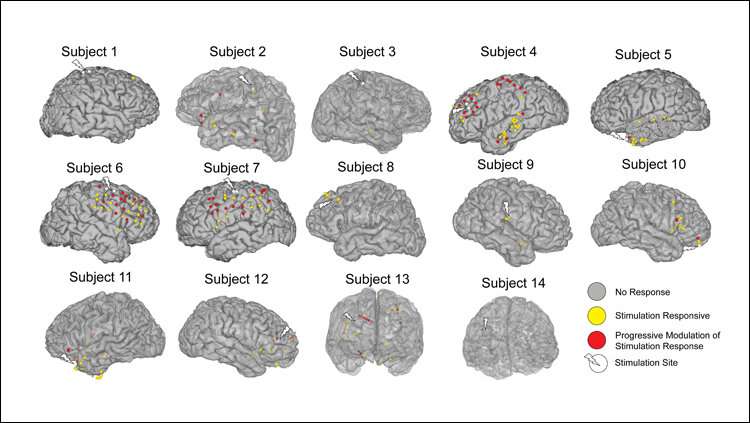How electrical stimulation reorganizes the brain

Recordings of neural activity during therapeutic stimulation can be used to predict subsequent changes in brain connectivity, according to a study of epilepsy patients published in JNeurosci. This approach could inform efforts to improve brain stimulation treatments for depression and other psychiatric disorders.
Corey Keller and colleagues delivered electrical stimulation from implanted electrodes in 14 patients while recording participants' brain activity.
Repeated sets of stimulation resulted in progressive changes to the brain's response to simulation, with stronger responses in brain regions connected to the stimulation site.
The researchers observed these changes in a matter of minutes, suggesting that electrical stimulation induces the brain to rapidly reorganize itself.
Assessing brain activity before, during, and after simulation has the potential to personalize neuromodulation therapies. Whether these results will translate to non-invasive techniques, such as transcranial magnetic stimulation, and to other patient populations remains to be determined.
More information: Intracortical Dynamics Underlying Repetitive Stimulation Predicts Changes in Network Connectivity, JNeurosci (2019). DOI: 10.1523/JNEUROSCI.0535-19.2019

















